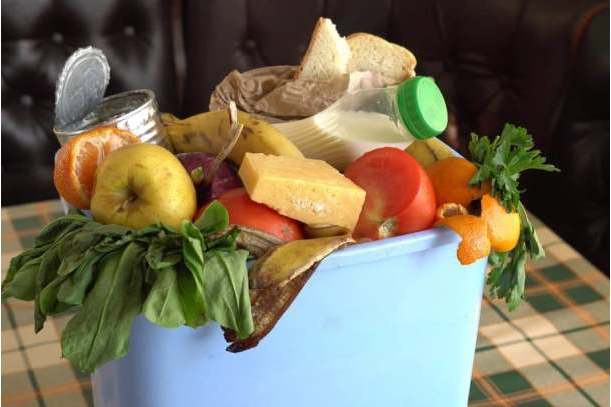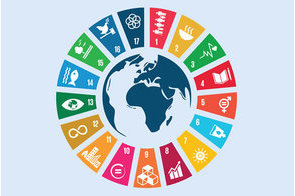Reducing food loss and waste key to achieving SDG 2

Summary
Food waste is more prevalent in developed regions. Whereas, there is higher incidence of food loss in developing countries.
A United Nations report, entitled "Africa Regional Overview of Food Security and Nutrition," released in February 2019 shows that hunger continues to rise in the region with an estimated 237 million people in sub-Saharan Africa suffering from chronic hunger and malnutrition. This puts a huge strain on efforts to achieve Sustainable Development Goal 2 (SDG 2), which seeks to end hunger and all forms of malnutrition by 2030.
The hunger epidemic in the SSA region is one major reason to reduce the high magnitude of food loss and waste (FLW) arising from inefficient use of resources. To eradicate hunger, SDG 2 is supported by SDG 12, which aims to promote responsible consumption and production patterns.
The newly-released 2019 State of Food and Agriculture (SOFA) report by the Food and Agriculture Organisation (FAO) of the UN shows that 14 per cent of the food produced globally is lost during the post-harvest production stage before reaching the retail stage of the food system. An earlier estimate by FAO showed the FLW figure to be about one-third of all food produced globally.
SDG Target 12.3 focuses on halving per capita global food waste at the retail and consumer levels and reducing food losses along production and supply chains, including post-harvest losses, by 2030. The latest SOFA report defines FLW as "the decrease in quantity or quality of food along the food supply chain." The FAO and UN Environment are working on two sub-indicators, namely Food Waste Index (FWI) and Food Loss Index (FLI), to measure food waste and losses, respectively.
The FLI, which has already been created by FAO, examines food loss along the supply chain, from production, handling and storage, and processing. The objective is to improve the impact of policy and investment and enhance the efficiency of the supply chain. The FWI is still in development at UN Environment. It aims to measure tonnes of wasted food per capita.
Food waste, occurring at the retail or consumption stage of the food supply chain, is more prevalent in developed regions. Whereas, there is higher incidence of food loss (food that is spilled or spoilt before it reaches the markets) in developing countries. A recent report by the International Food Policy Research Institute (IFPRI) says in developing countries, "food loss during production, trade and processing tends to outweigh food waste occurring at the retail and consumer stages of the supply chain."
Reducing FLW is crucial to improving food security. However, food loss and waste do not only limit our chances of achieving food security; it also affects our environment. The tonnes of food we throw into landfills release methane, a greenhouse gas (GHG) that is 27-30 times more potent than carbon dioxide in causing climate change.
As reported by the FAO, more carbon footprints are produced as food is wasted along the food chain, after it has been harvested. This means that an uneaten morsel or bowl of prepared yam flour paste accounts for more heat-trapping gases in the earth’s atmosphere than a piece of yam or plantain that got bad and was discarded during harvest. This is because the process of transporting and processing of yam or plantain into flour generates more GHGs. Therefore, we need to address both loss and waste of food. But whether it is food loss or food waste, food that is not eaten generates 8 per cent of global GHG emission.
Moreover, all the resources that would have gone into producing food that is eventually not consumed would have been wasted. Apart from resources like water, fertilizer, seed, feed, labour and others, about 5.4 million square miles or 10 percent of habitable land is used in producing food that is never eaten globally.
There are several factors responsible for the high incidence of food loss in developing countries. There is poor knowledge in developing countries – relative to developed regions – about how to prevent or manage pests and diseases both on the fields and in storage facilities. Farmers and other players in the value chain of the developing world are still unable to access modern technologies for proper harvesting, storage, processing and packaging of food. These challenges cause so much loss, especially for perishable foods like fruits, vegetables, meat and milk, to mention a few.
Also, in the process of loading farm produce onto trucks and transporting them to different locations, some get damaged or spoilt due to poor road infrastructure.
Governments in developing countries have a huge role to play by providing better market access to reduce losses along the food chain. The food losses in developing countries are largely due to infrastructural constraints, particularly in rural areas where food production largely takes place. We cannot overemphasize the importance of infrastructure such as transportation systems (road, rail, etc.), electrification, and storage facilities. Ensuring that these infrastructures are closer to producers (farmers) will help reduce food loss and make more food available.
Governments can support expansion of extension services in rural farming communities to assist farmers. Their services will be very useful in helping farmers to prevent or curtail outbreaks of pests and diseases. They will also assist in educating farmers about modern harvesting practices and techniques to minimize losses.
Since the transportation sector accounts for a significant amount of GHG emissions, transporting agricultural produce over long distances has negative impact for the environment. It is, therefore, important for governments to design agriculture systems whereby food is produced closer to consumers. Promoting agricultural systems that ensure each district or zone is substantially self-sufficient in food production; has adequate processing and storage facilities, together with distribution networks will help to reduce food losses, eradicate hunger and protect the climate.
For example, if the southern part of a country is able to produce and cater for all or most of the food needs of its dwellers, the need to transport food items from other regions will be eliminated and vice versa. There are technologies now that make it possible to efficiently utilise limited resources in any region.
Farmers and other food producers can also improve their market targeting abilities based on effective demand for their products. This will minimise food loss and waste.
Consumers can reduce the quantity of food wasted by making sure they store food properly. In the absence of a refrigerator or poor power supply, for instance, as is the case in many developing countries, it is better to cultivate the habit of buying the amount of perishable foods that will be consumed in a day or two.
For those who can refrigerate, it is good to ensure that all food items in the refrigerator are used up before shopping for new food items. Leftovers can be avoided by cooking the amount of food to be consumed at a time. Besides, it is not a bad idea to use leftover foods from a present meal as ingredients for the next breakfast or dinner.
Governments across Africa and other developing countries have a responsibility to support the actualisation of zero hunger by strengthening efforts to minimise food loss and waste across the food supply chain. As we all work towards reducing the amount of food that goes uneaten, more food will be available, affordable and accessible to lift millions of people out of hunger and chronic malnutrition.
Financial Nigeria Columnist, Mojisola Karigidi, is a Nigerian biochemist and the founder and product developer at Moepelorse Bio Resources. She is also a Global Innovation Through Science and Technology (GIST) awardee, and an Aspen New Voices fellow.
Related
-
Hamzat Lawal shortlisted for global sustainability award on anti-corruption
The award organiser said corruption increases poverty, complicates effective climate action, and hinders the chances of ...
-
Ghanaian President launches pan-African SDGs innovation award
The Africa Innovates for the SDGs award is open to innovators from all African countries.
-
Access Bank, other stakeholders facilitate SDG data analytics in Nigeria
Access Bank pioneered sustainability reporting in the Nigerian financial sector in 2009, using the GRI Standards.







